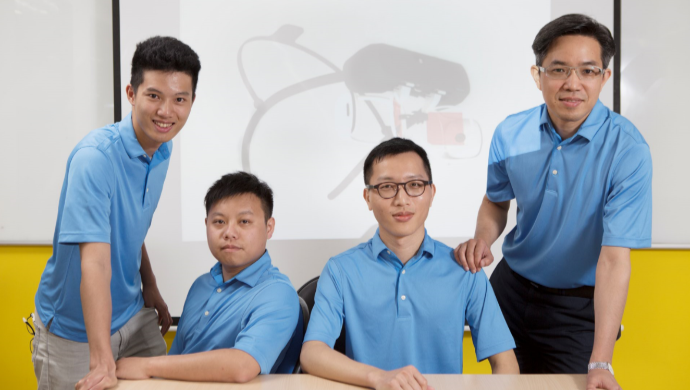Neurospeed by Neurobit, can detect strokes by reading eyeball movement and tell within one minute whether someone is showing stroke symptoms

The article Taiwan startup Neurobit says new device can detect strokes via eye examination was written by Liam Gibson for Business Next.
Strokes are the second highest cause of death in the world and they often happen without warning with just hours to treat safely, according to the World Health Organizaiton. But conventional methods of detection miss some of the telltale clogs in the brain.
Taiwanese medical technology startup Neurobit developed Neurospeed in July of 2017 to detect strokes by reading eyeball movement. The company leaders believe this method to be quick and more reliable than the scans typically used today.
Neurospeed is a cranial nerve examination device that analyses involuntary eye movement, which can tell within one minute whether someone is showing stroke symptoms, according to a 2013 medical journal report. By 2015 a John Hopkins Hospital neurologist had designed a technique to read eyes for strokes.
Also Read: From lab to life, technology comes together at SWITCH 2018
The Neurospeed device uses those movements to measure the stability of a patient’s vision. It checks rapid head rotation and looks for any signs of skew deviation, an abnormality when eyeballs are not completely aligned when moving.
This process can sense 90% of stroke-related abnormalities in the brain, Neurobit Chief Executive Travis Yi told Business Next.
CT scans and MRIs are the two most widely used methods for examining strokes today.
Market for the device
The company anticipates a product launch next year, followed by a final push for funding as they visit the United States, a major target market, periodically to meet local doctors for feedback.
Neurobit’s founders plan to develop a range of devices that embed the technology for faster screenings. The device will be able to screen for strokes at emergency scenes and in hospitals as well as aboard ambulances.
Eventually, consumers may be able to get the devices themselves, including in rural areas. This level of access would help people at risk of strokes do self-checkups.
A team of students
Most of the Neurobit founders are students. Chief Technology Officer and the youngest co-founder Jim Huang finished grad school at National Taiwan University, where he researched medical engineering after majoring in biotechnology.
Also Read: Didi’s loss of trust has industry-wide consequences
“As students, we only lack experience in linking up with industry,” co-founder Wang Jing-fu said. Neurobit has not yet raised funds, Wang told Business Next, so the founders must solve every issue themselves.
Roger Chen, the only co-founder with industry experience, looks after finances and operations, adding the firm needs greater business finesse to overcome the lack of integration in upstream and downstream medical equipment.
–
The article Taiwan startup Neurobit says new device can detect strokes via eye examination first appeared on Business Next.
The post Taiwan startup Neurobit says new device can detect strokes via eye examination appeared first on e27.